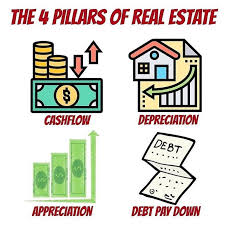Investing in Real Estate versus the Stock Market

Dr. Joel J. Napeñas
9 minute read
We have been classically told that investing in stocks has generated the greatest returns over time and therefore better than real estate as an investment.
According to global investment bank Goldman Sachs, 10-year stock market returns have averaged 9.2% over the past 140 years. Since most people’s primary exposure to real estate is their home, the appreciation of residential real estate is often used as the comparison, with national appreciation values averaging around 3.5% to 3.8% per year.
On the surface, this looks like a no-brainer. According to this, investing in stocks outperforms residential real estate appreciation almost 3-fold. So we are all told that the safest and most reliable way to build wealth is to build a diversified portfolio of stocks, bonds, mutual funds and exchange traded funds. Retirement plans for most employers or small businesses only offer these options to build your next egg with, and they are the sole vehicles touted by most financial advisors.
So we are all advised to live below our means, put away a significant portion of savings into the portfolio, and hope that it grows enough (and that there is not another year 2000 or 2008-like crash) so that you will have enough to retire in 20 to 35 years and not run out of money before you die.

Stock pickers and trading
For those ‘do it yourself-ers’, we are attracted by the lure of the stock market, watching CNBC and seeing all the ticker symbols scrolling on the bottom, showing individual stock prices by the minute. All the fast talking commentators and prognosticators get us all excited. It is akin to watching a sporting event or a video game. We open up that Robin Hood or E-Trade account and make our picks, thinking that, in our spare time, we can individually can outperform the market (not to mention the hedge fund managers, portfolio managers and professional traders) by timing when to buy something low and sell it high. We feel like we have more control because we can instantly make those transactions literally in the palm of our hand, and that we can outsmart others’ and generate greater returns.
The truth of the matter is that stock picking is a difficult game. According to Morningstar, 9 out of the past 10 years (up to 2021) the whole market was positive for the year (2018 -4%). Only 42% of individual stocks are positive for the entire 10 year period, 36% are negative for the 10 year period, 22% are gone (either out of business or merged with another company), and 4 out of 5 stocks trail their own benchmark including that of the S&P. The majority of the gains in the market are carried by only a few large cap stocks (e.g.: Apple, Facebook, Amazon, Microsoft). But we all think that we can find those few stocks that will go up 2, 10 or perhaps even 100 fold, and getting those big wins are our ticket to financial freedom. This is no different than gambling or playing the lottery.

The Four Pillars of Real Estate, and How they Compare to Investing in Stocks
If real estate supposedly significantly underperforms the stock market, then why is it the vehicle that has reliably created fortunes for so many notable wealthy individuals? For example, while Warren Buffett’s partner, billionaire Charlie Munger, is known for his prowess in stock investing and owning businesses, he made his initial fortune through real estate investing.
Real estate has inherent properties and advantages that accelerate income generation and wealth creation that stocks do not.

Appreciation
We are all conditioned to invest in something for appreciation, hoping that we buy it at a lower price and are able to sell it in the future for a higher price and make a profit. Stock pickers that hold long term hope that they have shares in companies that (or have the potential to) grow and offer something that makes it profitable, and that their value increases so that they can sell their shares later at a profit. Day traders hope that they can outsmart everyone else by trying to anticipate others’ (a.k.a. ‘The market’s) valuations of a stock within days, hours, minutes, or even seconds. It is because of the latter that stock prices do not really correlate with their financial performance. The notable example is at the time of this writing, Apple (a very profitable company) is trading for 28 times its earnings, whereas Tesla (a less profitable company) is trading for 351 times its earnings.
While real estate has also been classically touted as an asset class that appreciates over the long term, it is also subject to price fluctuations dictated by the market, as the global financial crisis of 2008 is an extreme example. As the time of this writing, real estate has been appreciating greatly due to supply and demand factors for personal, business and investment standpoints. Investors with money (e.g.: institutional investors and high income earners) are looking for assets that generate greater returns and have been pouring their money into real estate, thus driving their valuations upwards.
What drives real estate values higher are a number of factors, such as the market (as the saying goes, ‘location, location, location!’), choosing locations where there are demand (i.e.: where more people are moving to,) general economic conditions (e.g.: employment rate, income), improvement in the quality of the property itself (e.g.: renovations), and its earnings. Specifically in the case of commercial real estate (which includes large residential properties), their value is directly correlated to their net operating income (NOI), which is the equivalent of a company’s earnings. We know that a typical middle class apartment complex in Houston, Texas is selling for roughly 20 times its NOI, and that you can apply that to all equivalent properties in that market. The same cannot be said for stocks. While market and economic conditions can alter this, it is not subject to the daily or weekly fluctuations that occur with stocks.
While a stock’s value can go to zero (i.e.: the company goes out of business), this never can happen to real estate, even in the event of a market ‘crash.’ Real estate is a tangible and finite asset that will always have some sort of value. Even if the building on a property burns down, the value of the land that it sits on will have some value. Whereas if a company goes out of business, it essentially is worthless and disappears. There are many examples of prominent companies that were once blue chip stocks (e.g.: Sears) that are no longer in existence.

Cash Flow
Some stocks generate cash flow through a dividend, in which they return a portion of their profits back to their shareholders. Historical dividend yields for the S&P 500 have typically ranged from between 3% to 5%, however in the last 10 years it is much lower. After a brief climb to 3.11% during the peak of the Great Recession of 2008, the annual S&P 500 dividend yield averaged just 1.97% between 2009 and 2019. Therefore for example, if recent trends of lower dividend rates hold true (which by all indications look like they will in the foreseeable future), to generate cash flow of $100,000 a year without using the invested principal, one would need to have a portfolio of the S&P 500 of over $5 million dollars! Moreover, the tax rate on qualified dividends is 0%, 15% or 20%, depending on your taxable income and filing status, meaning that the $100,000 of income is really only $80,000 after taxes.
Most of the popular stocks that people like to invest in (strictly for appreciation purposes) are growth stocks, usually companies that do not pay a dividend. Lastly, dividend yields, and reinvestment of the dividends are included in the overall calculation of total historical returns for the S&P 500 of 9.2%, therefore if one was to not reinvest the dividends and take the cash flow, the returns are significantly lower.
Investing in real estate that is not for primary residence or personal purposes, can be a reliable source of cash flow. If properly executed, active ownership, or passive investment in real estate typically yields a return (or ‘cash on cash’ [COC]) of 7-10% of annual net income after expenses, taxes, insurance and debt service. Moreover, because of real estate’s unique tax efficiencies, the income can be tax-free. Therefore, to get the same $80,000 after tax cash flow as referenced above, one would need a portfolio less than $1 million dollars, or one-fifth of that of a basket of S&P 500 stocks. In addition, in the event that there is a ‘market bubble’ in which the value of the property in the market plummets, it is still possible to generate positive cash flow that provides a stream of income.

Debt paydown
For most (both individuals and investors), real estate is acquired using some form of financing. Therefore, each time a mortgage payment is made on a monthly basis, a portion of the principal (i.e.: balance owed on the mortgage) is paid off and one’s equity on the property increases, thereby increasing net worth. Again, if this is an investment property whose mortgage is being paid down by tenants, this equity build up is happening passively. This simply is not the case with stocks.

Tax efficiencies
Because governments want owners to provide housing or space for business activities, they provide incentives in the tax code to real estate investors. This is generally true in most jurisdictions, and especially true in the United States. Unlike dividends generated by stocks, the cash flow generated on real estate investments is generally tax-free. Since the contents that comprise the buildings have a finite life span that require replacement, they are considered and counted as depreciating assets. This depreciation is then taken as a ‘paper loss’ (meaning that it is only a loss in the books and not an actual loss in your pocket) and is used to offset the actual real income generated from the profits from earnings when filing taxes. This is a unique feature to real estate. Moreover, one can have such a ‘paper loss’ that is greater than the income generated in a given year from their investment, and use it to offset their other sources of income from taxation. Lastly, there are ways in which one can sell a property at a profit and purchase another one without paying capital gains tax on the profits of the first one. None of these aspects apply to stocks.
So what are the disadvantages of investing in real estate versus investing in stocks?
Monetary requirement – First, there are generally larger barriers to entry to invest in real estate with a larger monetary outlay. While one can buy shares of an individual stock for only a few dollars, one would require thousands to tens of thousands of dollars to invest in real estate (with the exception of Real Estate Investment Trusts [REITs])
Liquidity – One can simply log into their Robin Hood account and sell their shares of a stock, or ask their financial advisor to make changes in their portfolio of mutual funds and get this done within a day, or even seconds and have the cash readily available. The same cannot be said for real estate, whether it is actively owning a property or investing passively in a syndication. The exception to this are REITs, which trade in the stock exchanges, but do not have most of the inherent advantages outlined above that other real estate investments do.
Risk of loss of capital – Owning properties may have issues, such as non-paying tenants, vacancies, increase in maintenance costs, utilities, insurance and property taxes, or adverse events that would require a large outlay of capital beyond the initial investment. This is obviously not a factor with stocks. In the case of real estate, this risk can be mitigated by investing passively with a fund or syndication with competent fund managers or deal sponsors, respectively.

Conclusion
So we established that the straight comparison that is widely touted between the returns of the S&P 500 and appreciation of residential real estate is not a fair one.
While the S&P 500 can generate a historical return of 9.2%, this includes the income from dividends, and if realized either through income or profits on sale, is taxed, therefore really giving a lower yield.
By comparison, if one was to apply the historical appreciation rate of residential real estate of 3.2%, assume that it is financed at a rate of 75% (thereby really giving an appreciation rate of 12.8% of down payment), generates a tax-free 7-10% COC return, increases equity, can be sold at a profit tax free, and even be a way to offset other income from taxes, it is potentially a much more powerful rate of generating income and building wealth.
Tell us what you think. Do you agree, disagree or have any questions or comments?
Dr. Napeñas, a practicing academic dental specialist in Oral Medicine, is founder and managing partner of 5DH Partners, a real estate investing firm that educates and helps dentists and other professionals generate passive income and build wealth through investing in real estate.
Want to learn more about investing in real estate without being a landlord?
Subscribe to our email newsletter here.
Set up a time to talk with us personally here.
Download a copy of our free e-book here to learn how dentists and other professionals can replace their income by passively investing in real estate. .
Visit our Facebook and LinkedIn page, or join our newsletter mailing list for articles, updates and opportunities.